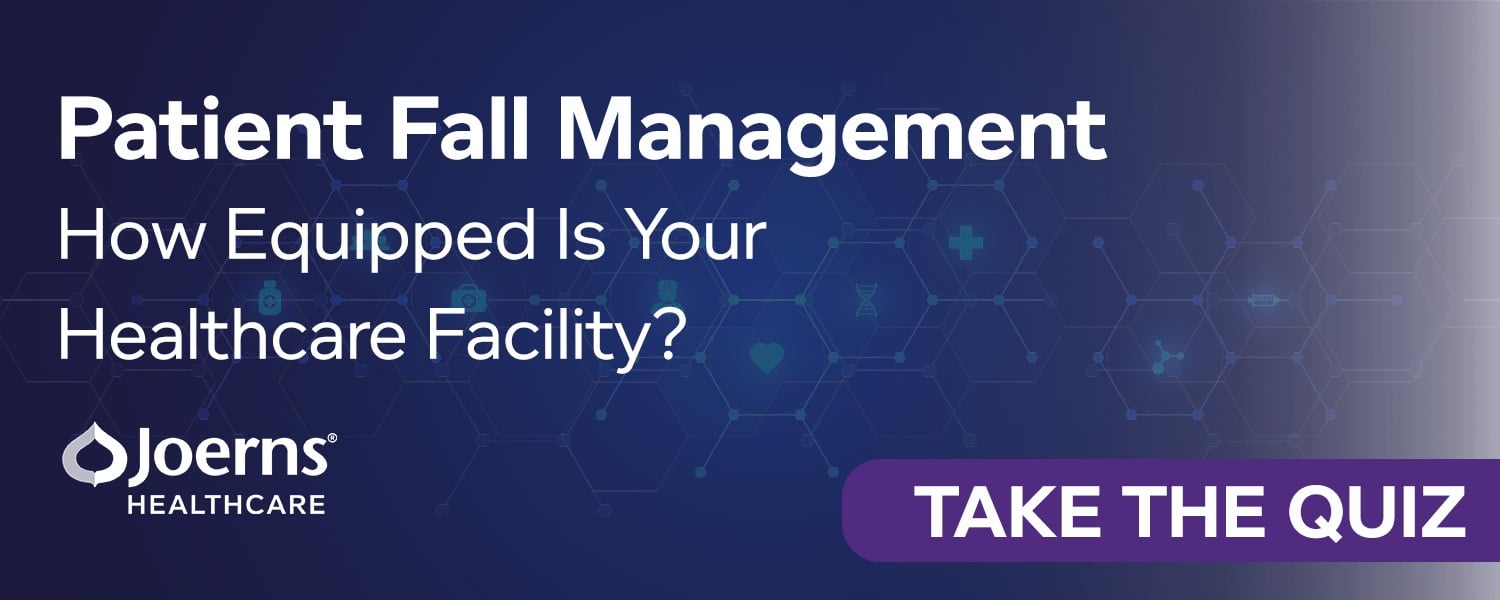Falls are among the leading causes of injury and death in skilled nursing facilities. With an aging population and an increase in chronic diseases, it is critical for nursing leaders to prioritize fall prevention. Falls can lead to unnecessary suffering, a lower quality of life, and even death. Falls also harm facilities’ reputations, potentially resulting in fines and lawsuits.
Almost every skilled nursing facility has a fall prevention program in place, but it’s crucial to avoid the temptation to set a program up and leave it running without periodic reassessment of its central components. Chief Nursing Officers (CNOs) and other nursing leaders are ultimately responsible for taking time to rethink established fall prevention programs and ensure they are still optimized to meet patients’ needs.
Why Rethink Your Fall Prevention Program
Even with fall prevention programs in place, healthcare facilities can still experience a high number of fall incidents. If effective, a fall prevention program can be a tremendous system for promoting patient safety. An outdated or poorly constructed fall program, however, can lull staff and nursing leaders into a false sense of safety, increasing the systemic fall risks of a skilled nursing facility.
Here are a few reasons why it’s vital for nurse leaders to rethink their fall prevention program:
- Shift in Patient Demographics – As the population ages and patients have higher and higher acuity, the number of high-risk patients susceptible to falls increases. Hence, strategies need to be continually adjusted to cater to the changing patient demographics.
- Evolving Best Practices – The science and understanding of fall prevention are constantly evolving. It is important to ensure that fall prevention programs are aligned with the latest research and best practices in fall prevention. What worked well five years ago may not be the best option today.
- Poor Patient Outcomes – If falls are an issue, rethinking a fall prevention program may decrease fall incidents. It is always better to rethink a fall prevention program before poor outcomes occur and to be proactive, not reactive.
- Cost Savings – The economic impact of falls in healthcare settings is significant. By reducing the frequency of falls, healthcare organizations can save on treatment costs and potential litigation.
While the time is always right to reevaluate your facility’s fall prevention program, nursing leaders transitioning into a new position should especially consider reviewing the fall prevention program. This helps to avoid carrying over outdated strategies and provides a shift towards a culture of safety during the leadership transition.
Improving Your Fall Prevention Program
Nursing leaders should take a multifaceted approach to rethinking their fall prevention program, identifying new areas of focus and improving existing strategies and approaches. While there are many components to an effective fall prevention program, some components are absolutely essential.
Fall Risk Assessment
Nursing leaders should establish routine fall risk assessments for every patient. This involves using an evidence-based fall assessment tool that has been proven effective at evaluating individual patients’ fall risks and allows for consistent communication between team members. These tools should be used regularly at a defined frequency to ensure each patient’s risk is consistently evaluated.
Environmental Modification
It’s vital to regularly assess the care environment for potential hazards and make necessary adjustments. This assessment could include evaluating lighting, flooring, bed heights and widths, support surfaces and the availability of handrails or grab bars. Environmental hazards are not only a common source of falls but also carry a high potential for litigation due to the facility’s responsibility to maintain a safe environment.
Staff Education and Training
Regular falls management training sessions are essential for keeping staff up-to-date on the fall prevention program and their responsibilities relating to it. Training should also increase staff’s understanding of the causes of falls and how to prevent them. Fall prevention knowledge should be coupled with a proactive approach that encourages all team members to take responsibility for fall prevention, fostering a culture of safety.
Patient Education
Patients and their families need to understand the risks and prevention strategies associated with falls. Providing them with appropriate information empowers them to take an active role in fall prevention, leading to better adherence to protocols. Patient and family education also allows a more collaborative and engaged approach to fall prevention.
Modern Assistive Devices and Equipment
Modern assistive devices and equipment are crucial in preventing falls by empowering staff and patients with safe options for complicated or risky transfers. The availability of devices like floor based passive lifts, ceiling lifts, and sit-to-stand lifts can support mobility in patients who would otherwise be at an increased risk for falling. Using up-to-date equipment that is in good repair is essential for preventing falls.
Conclusion
While fall prevention programs have long been a cornerstone of patient safety, simply having an existing program isn’t good enough. Through constantly rethinking and improving fall prevention programs, CNOs can ensure the safety of their patients.
The cost of not acting is high. Failing to take action and promote continuous improvement can have a profound effect on patients, staff, and entire skilled nursing facilities. The cost of not acting is high. At Joerns, we’re here to assist you with implementing a comprehensive and effective fall prevention program. Contact us today so we can work together to make your skilled nursing facility safer.
